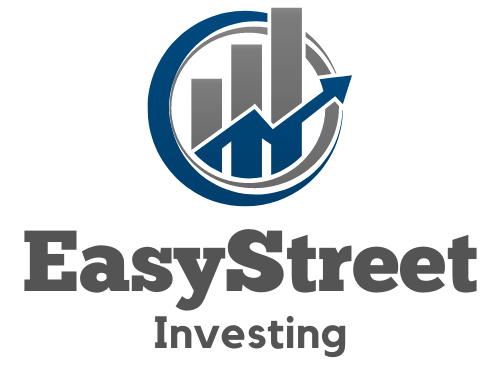In today’s cutthroat economy, small businesses often grapple with funding hurdles. Enter peer-to-peer lending, a game-changer that’s revolutionizing how these enterprises stay afloat. This innovative financial lifeline connects entrepreneurs directly with investors, bypassing traditional banking roadblocks. In this article, we’ll dive into the nuts and bolts of peer-to-peer lending and explore how it empowers small businesses.
As we unravel the intricacies of this alternative lending platform, you’ll discover how it creates a win-win scenario for both business owners in need and savvy lenders looking for growth opportunities. Expect to learn about the process, benefits, and potential pitfalls of peer-to-peer investing. Whether you’re a mom-and-pop shop on Main Street or an investor itching to make an impact, there’s something in store for everyone eager to understand the world of peer-to-peer financial support.
Important Highlights
1. Peer-to-peer lending platforms serve as innovative financial marketplaces, connecting individuals who are willing to lend money directly to small businesses in need of funding. This bypasses traditional banking structures, often resulting in more accessible loan opportunities for entrepreneurs and potentially higher returns for investors seeking alternatives to conventional investment options.
2. Small businesses benefit from quicker loan approvals and potentially lower interest rates through peer-to-peer lending compared to traditional bank loans. The streamlined online process is designed to match lenders with borrowers efficiently, reducing the time it takes for a business to receive vital funds for growth or operations.
3. Lenders on these platforms can diversify their investment portfolios by providing capital across various industries and regions, which can spread risk and increase the resilience of their investments. Individuals looking to support the growth of small enterprises can be part of this emerging trend by investing even modest amounts of money.
4. By using advanced credit assessment tools, peer-to-peer lending sites offer a level of credit scoring that helps mitigate the risk associated with lending to smaller entities that may not have an extensive credit history. This technology-driven approach allows for a more nuanced evaluation of a borrower’s ability to repay the loan.
5. Socially conscious investors find peer-to-peer lending particularly appealing as it empowers them to contribute directly to the economic prosperity of local communities and start-ups while receiving financial returns. The social impact aspect resonates with those who value transparency in seeing exactly where their money goes and how it is aiding economic development at a grassroots level.
Understanding Peer-to-Peer Lending for Small Businesses
Peer-to-peer (P2P) lending stands out as a revolutionary financial model that connects small business owners seeking loans directly with investors willing to lend money. This bypasses traditional banking institutions, often making the process faster and more accessible. Small businesses benefit from P2P lending platforms because they offer competitive interest rates and flexible repayment terms compared to conventional bank loans.
For investors, P2P lending presents an opportunity to diversify their portfolio and support the growth of local economies by assisting small enterprises. This symbiotic relationship fuels innovation and fosters community development. By using these platforms, businesses can access capital that might otherwise be unavailable due to stringent credit requirements or collateral obligations imposed by traditional lenders.
The Impact of P2P Lending on Small Business Growth
P2P lending has proven to be a catalyst for small business growth. Access to funds enables entrepreneurs to invest in inventory, hire staff, expand operations, or even refinance existing debts under more favorable conditions. The rapid approval process characteristic of P2P platforms means that businesses can react quickly to market opportunities without being bogged down by lengthy loan approvals.
Lenders on these platforms often assess risk differently than banks, sometimes taking into account the unique story of a business and its potential impact on the community. As a result, some small businesses deemed too risky by traditional metrics may still secure funding through peer networks.
Choosing the Right Peer-to-Peer Lending Platform
With the proliferation of P2P lending websites, it’s crucial for small business owners to research and select a platform that aligns with their needs. Consider factors such as interest rates, fees, loan terms, and the credibility of the platform. It’s also important to understand how each platform handles late payments or defaults.
A thorough evaluation should include reading reviews from other borrowers and possibly reaching out to them for first-hand accounts. Additionally, checking whether a platform is registered with relevant financial authorities can provide peace of mind regarding its legitimacy.
Risks Involved in Peer-to-Peer Lending
While P2P lending offers numerous benefits, both lenders and borrowers should be aware of the risks involved. Borrowers must ensure they have a solid plan for repayment; otherwise, they could face higher interest rates or damage their credit score if they default on the loan. Lenders must understand that not all loans will be repaid and should accordingly manage their investment amounts.
Diversifying investments across multiple loans can help mitigate losses for lenders. For borrowers, building a strong credit profile and presenting a clear business case can improve trustworthiness in the eyes of potential lenders.
Navigating Regulatory Compliance in Peer-to-Peer Lending
P2P lending operates within a complex regulatory framework designed to protect both borrowers and lenders. In countries like the United States, platforms need to comply with regulations set forth by entities such as the Securities and Exchange Commission (SEC) and state-level agencies.
Familiarizing oneself with these regulations ensures that all parties engage in lawful practices while minimizing risk exposure. Businesses looking into P2P options should consult legal advice to understand fully how these regulations affect their borrowing capabilities.
Advantages Over Traditional Financing Methods
The advantages of peer-to-peer lending over traditional financing are manifold. Small businesses particularly appreciate the reduced paperwork, personalized investor relations, and quick turnaround times. Moreover, P2P platforms often leverage innovative technologies like artificial intelligence (AI) to streamline processes and enhance user experience.
The use of AI allows for more nuanced credit assessments that factor in non-traditional data points which might be overlooked by traditional banks but could indicate a healthy business trajectory.
Cultivating Financial Health Through Responsible Borrowing
To make the most out of peer-to-peer lending opportunities, small businesses must practice responsible borrowing habits. This includes having a clear understanding of cash flow management to determine affordability when it comes to repayments. Keeping detailed records aids in transparency with potential investors who value diligent financial tracking.
Maintaining financial health not only ensures sustainability but also instills confidence among peer lenders who seek reliable partners in their investment endeavors.
How Can You Support Small Businesses?
- Explore various P2P lending platforms for investing opportunities.
- Conduct due diligence before extending loans to ensure responsible investment decisions.
- Spread awareness about peer-to-peer lending as an alternative financing option for small businesses within your network.
- Educate yourself about the economic impact small enterprises have on local communities.
- Foster relationships with business owners to understand their challenges and financing needs better.
- Diversify your investment portfolio across different industries and regions for balanced risk-taking.
- Mentor entrepreneurs on financial literacy and strategic planning for long-term success.
Frequently Asked Questions
What is Peer-to-Peer Lending?
Peer-to-peer lending, or P2P lending, connects individuals who need to borrow money with investors ready to lend. This direct system often bypasses traditional financial institutions and can offer more flexible terms and rates for small businesses seeking capital.
How does P2P lending support small businesses?
P2P platforms can be a lifeline for small businesses by offering them access to funds that might not be available through conventional banks. These loans can help with startup costs, expansion, inventory purchases, and other essential business needs.
Is P2P lending safe for both borrowers and lenders?
No financial transaction is without risk, but P2P platforms usually have measures in place to mitigate these risks. Borrowers are screened for creditworthiness, and lenders can diversify their investments across multiple loans to spread risk.
What interest rates can I expect with peer-to-peer loans?
Interest rates vary based on the credit profile of the borrower and market conditions. Typically, they can be more competitive than those of traditional banks since the overhead costs for P2P platforms are often lower.
Can I get a loan if my business is new or has bad credit?
While traditional banks may turn you away, P2P lending is more accessible. However, anticipate higher interest rates as lenders take on more risk lending to new or credit-challenged businesses.
What kind of collateral do I need for a P2P loan?
P2P loans may be unsecured, not requiring collateral. Yet some platforms might require a personal guarantee or specific assets as security depending on the loan amount and risk involved.
How long does it take to get funded through P2P lending?
The process can be quicker than bank loans. Once your application is approved, it could take just a few days to receive funds, thanks to the streamlined online procedures of P2P platforms.
Are there any sectors that benefit most from P2P lending?
P2P lending has been particularly beneficial for retail, restaurant, and service-oriented sectors where quick cash flow is critical. However, all types of small businesses can reap the advantages of this lending model.
What fees should I expect when using a P2P platform?
Borrowers might face origination fees or late payment fees. Lenders could encounter service fees. Always read the fine print before committing to ensure transparency regarding associated costs.
Can I pay off my peer-to-peer loan early?
Many P2P platforms allow early repayment without penalties. It’s wise to confirm this flexibility with your chosen provider before sealing the deal.
Closing Thoughts on Empowering Small Enterprises via Peer Financing
In conclusion, peer-to-peer lending stands out as a beacon of hope for small businesses craving financial support. By bridging the gap between innovative entrepreneurs and willing investors, P2P lending fuels economic growth one successful partnership at a time. The adaptability and potential cost savings compared to traditional finance methods make it an attractive alternative worth considering for any small business aiming to thrive in today’s dynamic marketplaces.
Moving forward, as we witness this modern finance model evolve, it holds promise not just for immediate funding needs but also as a stepping stone towards building stronger community-based economies. By fostering an environment where peers help peers succeed financially, we create a robust foundation for future prosperity that benefits us all.

